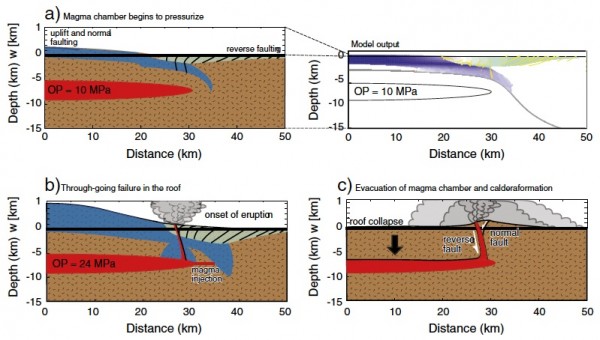In a 2012 Journal of Volcanology and Geothermal Research paper, colleagues Patricia Gregg, Shan de Silva, John Parmigiani (all at Oregon State University) and I present our analysis of the volcanic conditions needed to form a large caldera (e.g., Long Valley, CA). Supereruptions associated with large caldera growth have caused regional- to global-scale devastation regularly throughout Earth’s recent geologic history, and improving our understanding of how such events occur is thus of obvious societal concern.
Utilizing new temperature-dependent, viscoelastic finite element models that incorporate a Mohr-Coulomb failure criterion, we show that eruptive failure of the largest magma chambers is a function of the geometry of the overlying roof and the location of the brittle-ductile transition. As magma pressure increases within a candidate magma chamber, extensive uplift of the overlying roof promotes fault propagation that can trigger caldera subsidence and lead to supereruption. Our thermomechanical models also provide an estimate of the maximum size of magma chamber growth in a pristine host material and, thereby, an estimate of the maximum size of the resultant caldera.
For more information: Catastrophic caldera-forming eruptions: Thermomechanics and implications for eruption triggering and maximum caldera dimensions on Earth
Students: Want to get involved in caldera research?

— Sketch illustrating thermomechanical models of caldera and eruption initiation (Gregg et al., 2012)